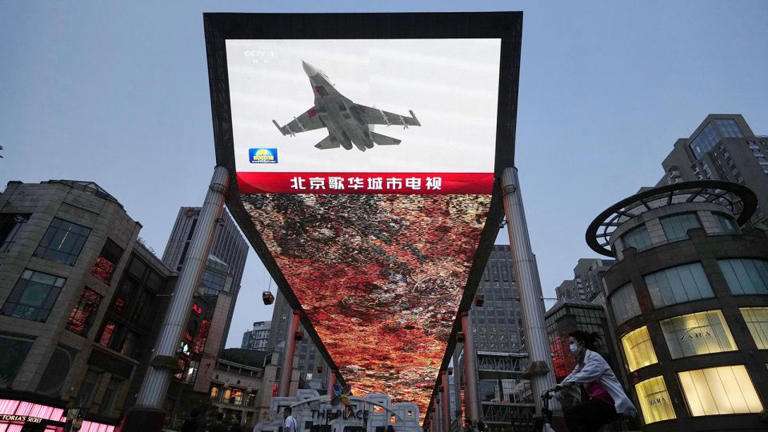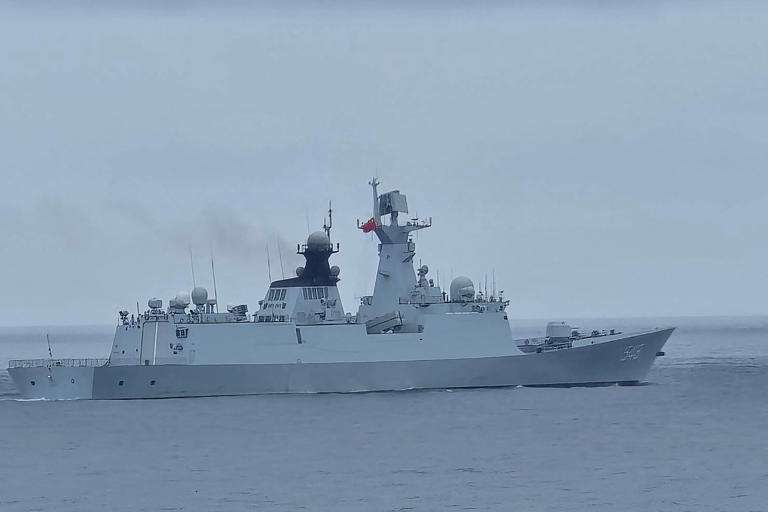Friday, May 24, 2024, marked the second day of Chinese military drills around Taiwan.
China’s defence ministry said the drills on Friday were testing its military’s capability to “jointly seize power, launch joint attacks and occupy key areas.”
China’s official state news agency said that the drills were “legitimate, timely and entirely necessary, as ‘Taiwan independence’ acts in any form cannot be tolerated.”
According to online ship trackers, atleast three Chinese coast guard vessels were also visible off Taiwan’s south-west.
Chinese state media reported that Chinese sailors had called out to their Taiwanese counterparts at sea, warning them against “resisting reunification by force.”
In response to the drills, representatives from Japan, the US, South Korea, and Australia called for calm.
Australia’s Foreign Minister, Penny Wong, warned that “the risk of an accident, and potential escalation, is growing.”

The European Union said that it has “a direct interest in the preservation of the status quo in the Taiwan Strait” and opposed “any unilateral actions that change the status quo by force or coercion.”
A spokesperson for UN Secretary-General, Antonio Guterres, said that they were following developments in the Taiwan Strait and urged “relevant parties to refrain from acts that could escalate tensions in the region.”
Despite Beijing’s large show of force, life continued as normal in Taiwan, whose 23 million people have become used to China’s military threats, even as they become more regular and prominent in recent years.
Nonethelss, the drills pose the first real test for recently inaugurated President, William Lai Ching-te.
On Friday, China’s Defense Ministry accused Lai of pushing Taiwan into “a dangerous situation of war”and “playing with fire.”
“Those who play with fire will burn themselves,” ministry spokesperson, Wu Qian told reporters, using rhetoric China frequently deploys for Taiwan’s government.
“Whenever ‘Taiwan independence’ (forces) provoke us, we will push our countermeasures forward until the complete reunification of the motherland is achieved.”
Wu Qian
New Mode Of Blockading Taiwan

Zhang Chi, a Chinese military expert, told China’s state broadcaster that the exercises focused on “practicing a new mode of blockading Taiwan.”
“Taiwan is an isolated island, suspended in the sea with weak self-sufficiency. Taiwan’s economy is export-oriented, and most of its energy consumption relies on imports. Once besieged and blockaded, it can easily lead to economic collapse, turning it into a dead island.”
Zhang Chi
Zhang said that the exercises to the south of Taiwan are crucial for the blockade, targeting Kaohsiung port, Taiwan’s largest port and an important base for the island’s navy.
He added that drills to the east of Taiwan are designed to practice cutting off the island’s energy imports, the escape routes for “Taiwan independence” forces and the support line from the US and its allies.
The US maintains close but informal relations with Taiwan and is bound by law to supply the island with weapons to defend itself.
Zhang also noted that the drills had achieved “a new breakthrough” by entering waters near Wuqiu and Dongyin, which hold significant geographical importance.
“The Taiwanese military views them as the front outposts for Taiwan Strait defense operations. This exercise further squeezed the activity space of the Taiwanese military,” he said.
Meanwhile, Carl Schuster, a former Director of Operations at the US Pacific Command’s Joint Intelligence Center, noted that he expects such Chinese activities to continue and that they “will become the norm,” with Beijing at any point able to then turn an exercise into a real military operation.
READ ALSO: NDC Sees Uptick In Positive Sentiment, IMANI Africa Report Reveals




















